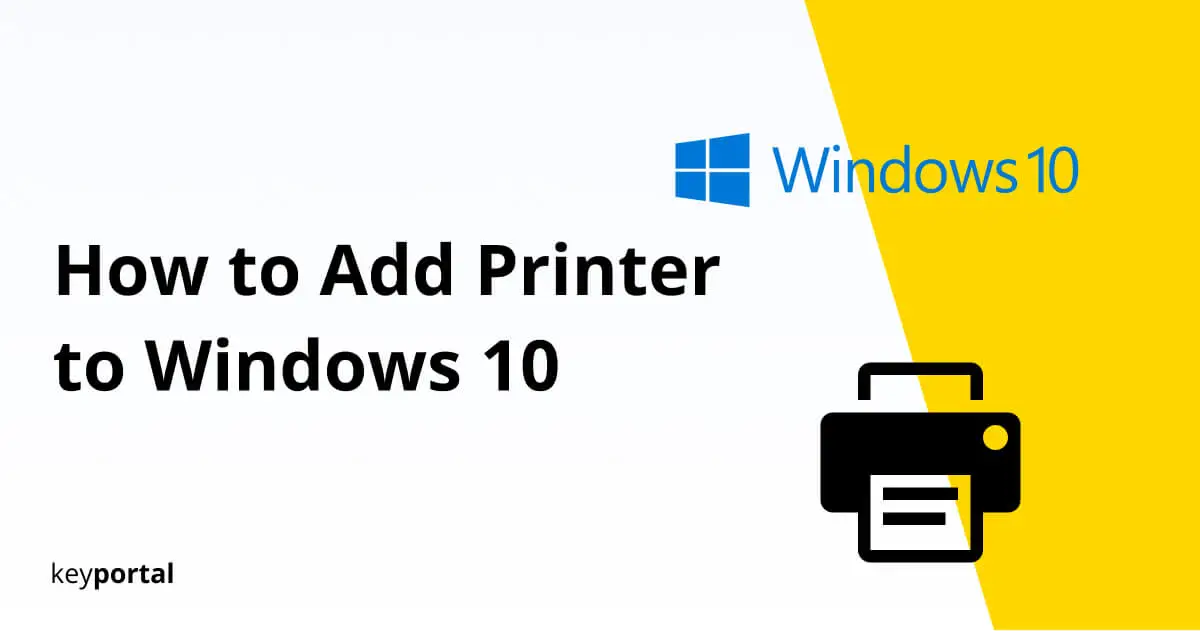You do not need any special prior knowledge to learn how to add a printer to Windows 10. Whether it is an inkjet printer for private use or a laser printer in the office, the setup of Windows 10 always runs according to a certain scheme.
However, there are the typical error messages: Windows 10 printer is not found or recognized, and the device does not respond. In addition, malfunctions often occur in wireless operation, for example, if you just want to print an important document with Microsoft Office.
How to Add a Printer to Windows 10: Known Issues Solved!
But before we go into individual problem cases and present you with tried-and-tested solutions, here’s a step-by-step guide to setting things up. This is how to add a printer to Windows 10:
How to Add a Printer to Windows 10?
- Open the Windows Settings via the cogwheel symbol in the Start menu of your computer or on the operating system or with Windows logo key + I.
- Via the Devices menu, you can access the Printers & Scanners tab, which you will find on the left-hand side.
- Now click on the command Add printer or scanner with the plus symbol. Windows 10 will now search for connected devices.
- Select your printer and click Next. The actual installation will start, and the printer will be added.
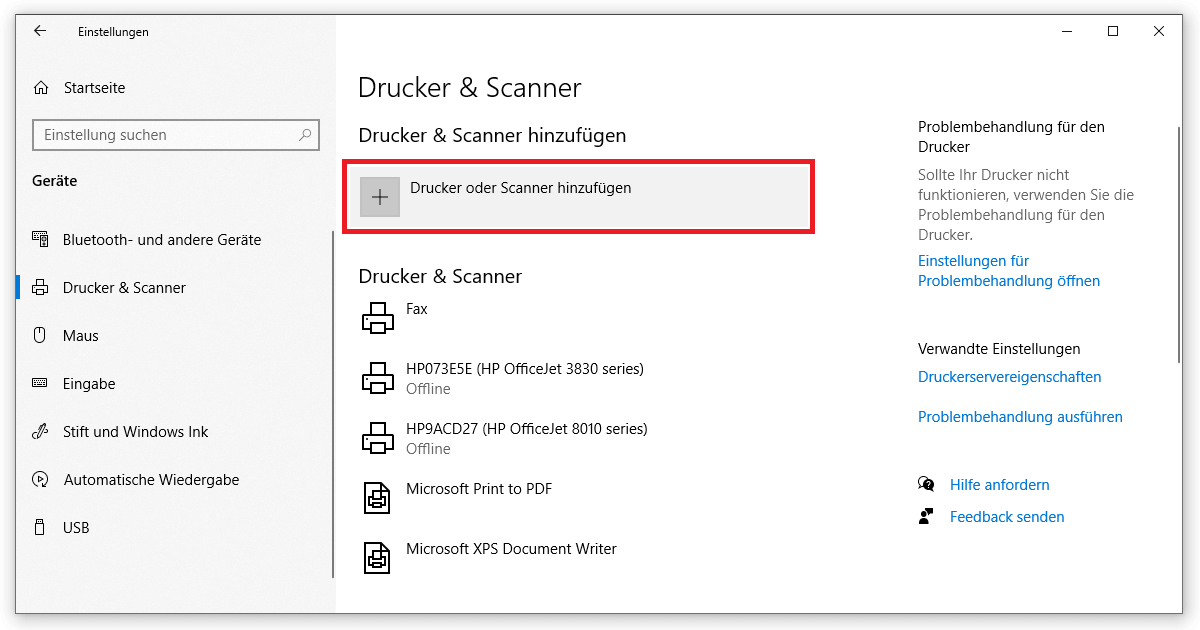
Basically, you can also use this guide for older versions like Windows 8. Microsoft has changed little in the system over the years, except renaming menu items. Therefore you may already know how to add a printer to Windows 10.
Note: Install Windows 10 Printer Driver before Setup!
However, you should refrain from adding printers right at the start of the installation of Windows 10. Although the option is prominently offered at launch, it falls back on an internal database regarding drivers. Depending on the state of the operating system, the data stored there can be outdated or incomplete.
We strongly recommend that you complete the wizard when you start Windows before you take a loot at your printer. Only when you can work normally on your PC, you should be able to add a printer to Windows 10. To do this, first take care of the driver. On the manufacturer’s page, which you can find on the Internet via the type or serial number, you will usually be helped.
For HP printers, for example, on this page you will find what you are looking for:
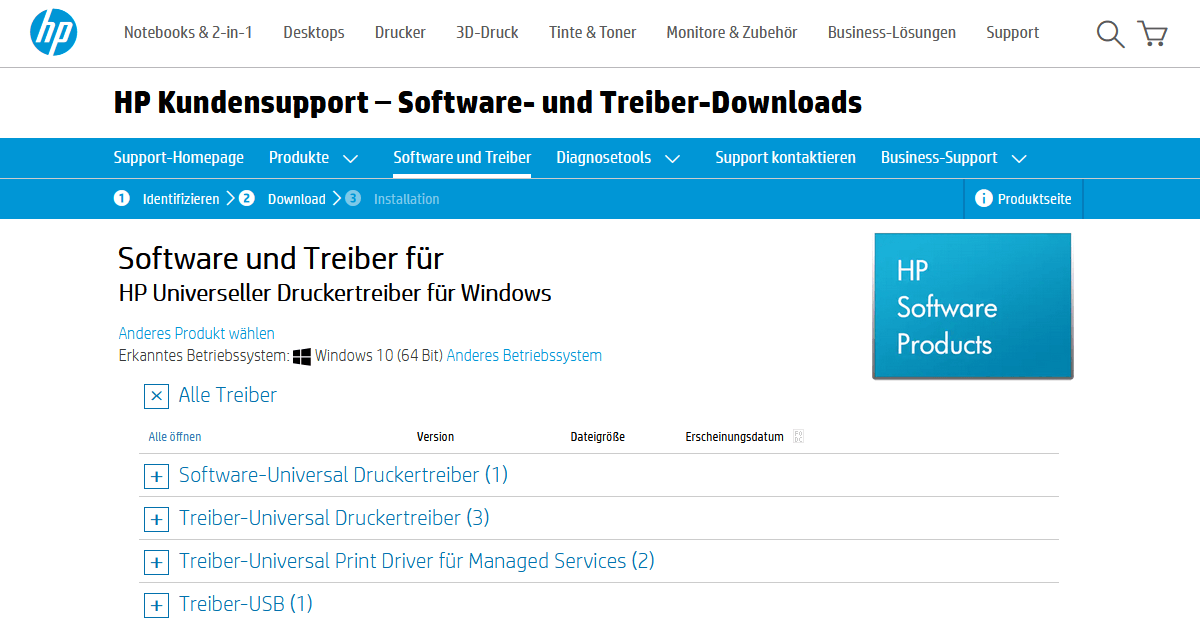
Older devices often have a CD with essential software, which also contains drivers. You should only access the Windows database in case of complications, which we will discuss in detail below. Sometimes certain settings are missing so that you need to check how to add a printer to Windows 10.
1. Problem with Windows 10: Printer is not Recognized
Especially with old devices, Microsoft’s driver database helps to find files that are no longer supported by the manufacturer. After all, in most cases it is due to missing drivers if the printer is not recognized. Here’s how you can still add a printer to Windows 10:
- Again open the settings via the gearwheel symbol in the Start menu or Windows logo key + I. There you go again via Devices to Printers & Scanners.
- Start the Add Printer or Scanner command as described in the installation instructions above. After the scan shows no results, click on The desired printer is not listed.
- There are several options here. Usually, for old hardware, the first item My printer is slightly older will lead you to the target.
- Alternatively, you can use the last option Add local or network printer with manual settings to directly select your connection. Usually you should use the printer port LPT1.
- In the last step, you click on Windows Update and select the model of your printer from a list. Select the driver, and you are ready to install printers in Windows 10.
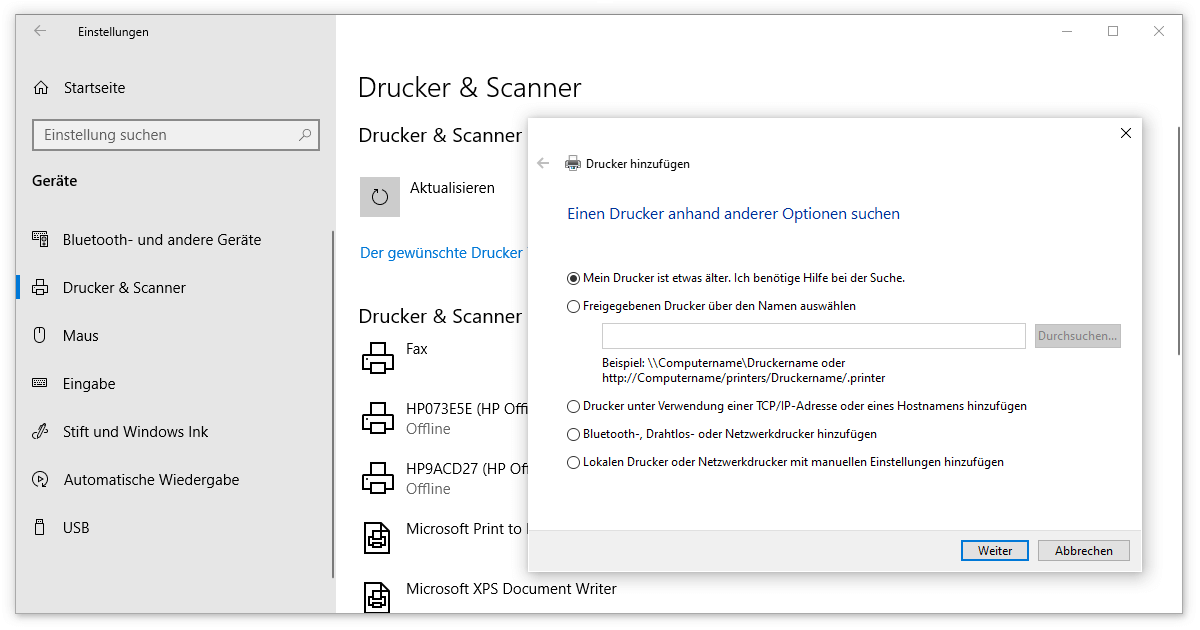
If your printer is not listed, there is still a chance to try a related driver. The manual of your device should list the printer language under the general information – from PCL1 to PCL6. Just try if drivers with the same background work.
2. Problem with Windows 10: WiFi does not Work
Even with modern devices, the WiFi regularly fails – a problem when you want to learn how to add a printer to Windows 10. In this case, you should first try to update the drivers and print a test page. In general, restarting your router or checking the associated access restrictions will also help. Everything else can be found in our guide on how to set up a workgroup.
Alternatively, open (as described in the first problem case) the settings of your device, so that you can install printers under Windows 10. After clicking on The desired printer is not listed, you choose the item Add printer using a TCP/IP address. Then enter the address of your printer manually and the WiFi connection should be established.
3. Problem with Windows 10: Changing the Default Printer
Thanks to the longevity of many computers, it is not uncommon for various printers to accumulate under devices, some of which have already been replaced. Perhaps you also use several machines at the same time. It can be very annoying if the wrong model is set as the default or if Windows automatically makes adjustments in this regard.
The answer to how to add a printer to Windows 10 is closely related to this selection. Therefore, it is best to go back to the Windows Settings and select Printers & Scanners (as described above). From the list of devices, select your favorite and click Manage. After that, the option Set as default appears. However, this button will only appear if you unchecked Windows manages default printers in the previous menu.
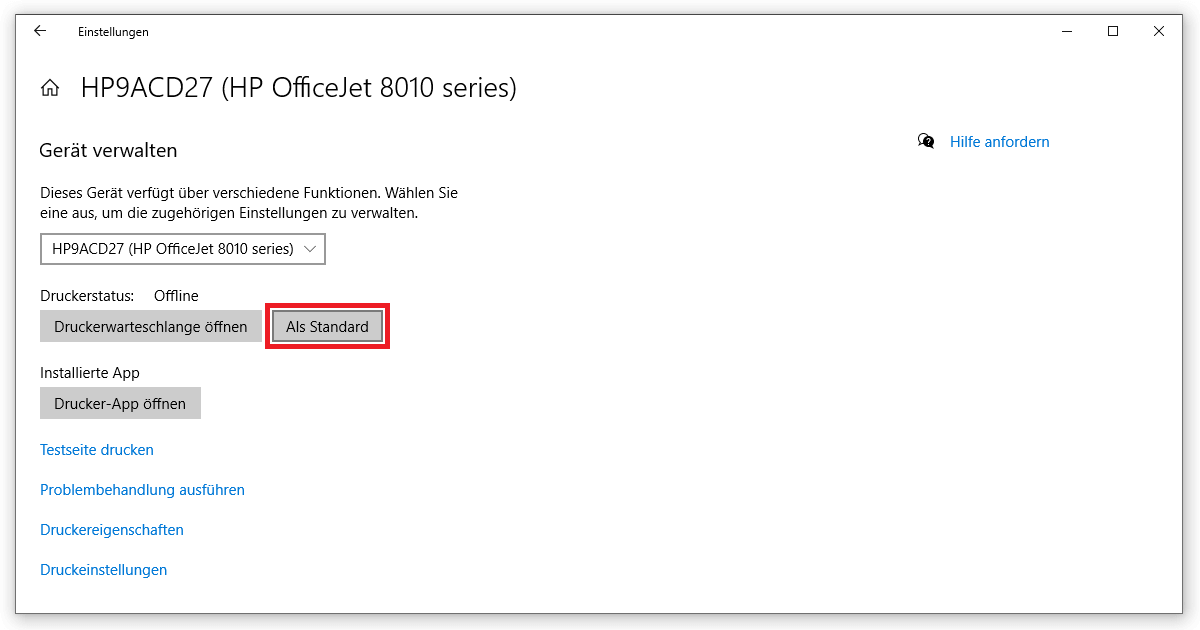
Now you know how to add a printer to Windows 10. If you still have other problems with your computer, just browse a bit on our blog. Here you can, for example, learn how to activate Bluetooth in just a few seconds or how to view your WiFi password. Good luck!
